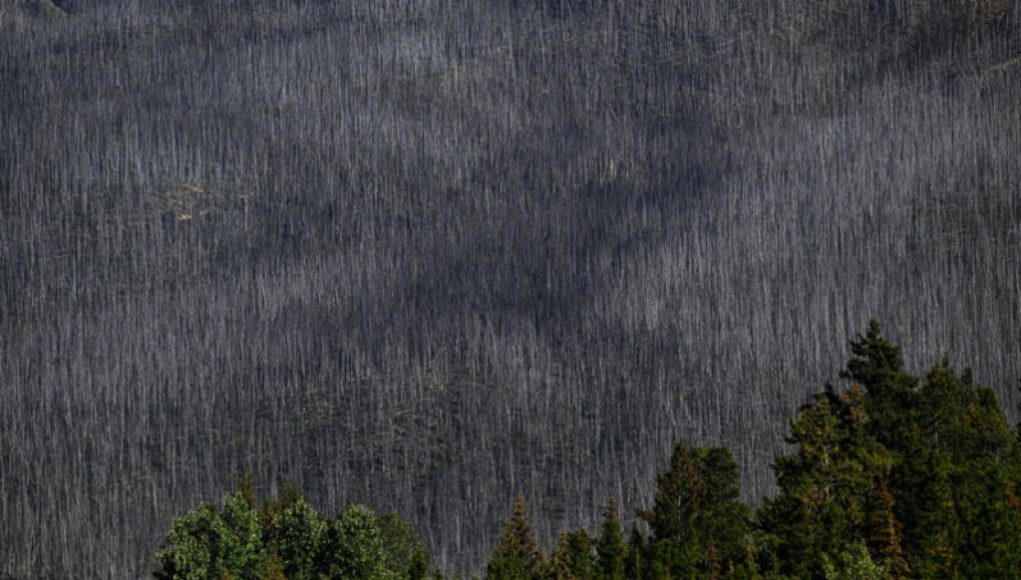The far north is a land of contrasts – a massive carbon sink and a ticking environmental time bomb. The region is home to vast boreal forests and underlying soils that store a huge amount of CO2. Organic peat soil, for example, covers just 3 percent of the Earth’s land area, yet it contains a third of its terrestrial carbon. Meanwhile, Arctic permafrost has locked away thousands of years’ worth of plant matter, preventing the release of planet-heating carbon dioxide and methane.
However, recent research has shown that wildfires and human interference are reducing the ability of northern ecosystems to sequester carbon, putting them at risk of becoming carbon sources. This, in turn, will accelerate climate change, which is already warming the Arctic four and a half times faster than the rest of the world, triggering the release of even more carbon – a vicious cycle.
In fact, over 100 wildfires are currently raging across Alberta, Canada, forcing nearly 30,000 people from their homes – an “unprecedented situation” in the region. The annual area burned in Canada has doubled since the 1970s, according to fire scientist Mike Flannigan at Thompson Rivers University. “A warmer world means more fire,” he says. “As the temperature rises, the atmosphere becomes more efficient at sucking moisture out of dead fuels. This means more fuels available to burn, leading to high-intensity fires that are difficult, if not impossible, to extinguish.”
Northern boreal forests are the largest land biomes on the planet. When they burn, they release greenhouse gases from both vegetation and carbon-rich soils, which the first new paper, released in March, quantified. In fact, burning boreal forests spew between 10 and 20 times more carbon than fires in other ecosystems. Typically, the blazes account for 10 percent of global fire CO2 emissions annually, but they contributed 23 percent in 2021, thanks to severe heat waves and drought.
“We are facing a dangerous positive feedback between climate and boreal fires,” warns lead author Bo Zheng of China’s Tsinghua University. “The slow recovery of soil microbial communities in forests after extreme wildfires weakens carbon sinks, making it difficult for them to fully absorb the large amount of carbon dioxide released during combustion.” This, Zheng adds, “will increase the concentration of carbon dioxide in the atmosphere and promote global warming, further increasing the likelihood of extreme wildfires.”
The world faces a climate emergency as the planet continues to heat up due to the unprecedented number of wildfires raging in the far north.
The consequences of a warming climate are made worse by high temperatures, dry air, and strong winds that help create the conditions for these wildfires. Scientists who study wildfires predict this fire season will only extend further, spreading across much of the Arctic, Greenland and Siberia. In Alaska, recent wildfires have burned 570,000 acres, twice the size of Los Angeles.
In addition to the physical destruction of these wildfires, they are releasing large amounts of carbon dioxide into the atmosphere. The Department of the Interior estimates that in the past five years the amount of carbon emissions released by wildfires has increased significantly.
These emissions can further accelerate the global warming process. Furthermore, the smoke produced by these wildfires can cause air quality issues, both in the immediate area and over longer distances, as well as harming wildlife and disrupting ecosystems.
As global temperatures continue to rise, the risk of large, intense wildfires increases. This is particularly true in the northern and western areas of North America. Fire seasons are often extended and the size of the wildfires is larger than ever before.
It is clear that new measures must be taken to address the climate crisis. Renewable energy sources, more efficient use of existing energy sources and tackling the larger root causes of climate change are increasingly important.
It is up to all of us to take a proactive approach to close the gaps in legislation, invest in environmental protection, and create meaningful policies that will ensure a more sustainable future for our planet. Only then can we mitigate the current and future impacts of increasing temperatures and fulfill our duty as stewards of our environment.




















